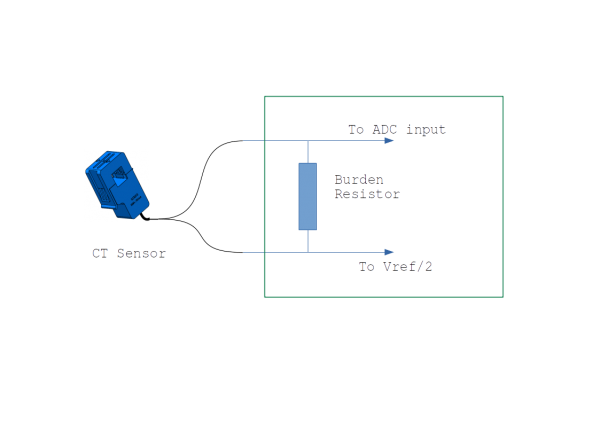RPICT Fundamentals
We will cover some of the basic fundamentals used by the RPICT series below.
Signal Flow
Each signal whether if it's a current or voltage line is first conditioned to obtain the desired range. We perform this either by simply adjusting the burden resistor or by fitting voltage divider or amplifier. This is an important step to condition the sensor range to the ADC range. Sensors may output anything but the ADC requires an input between 0 and Vref*.
The ADC converts a physical analogue signal into something a computer can process. This is where the conversion from real world to digital word happens.
The microcontroller collect raw data from the ADC and computes values such as RMS RealPower PowerFactor etc. It also send the final computation to the Raspberrypi using serial Uart. Note that on some RPICT the ADC is part of the microcontroller.
\* For what follows we will something refer to Vref/2. Vref is a reference voltage given to the ADC defining its range. Depending on the type of boards this is either 3.3V or 4.096V. As AC signals are waveform (positive and negative) the signal must be centred on half the range which is Vref/2.
Signal Conditioning
Current
Burden Resistor Alone
Most RPICT series CT range are adjusted using the burden resistor. It is connected directly to the ADC and Vref/2.
The burden resistor can be calculated with the fromulae below.
R = (Vref * Nturns) / (2√2 * Irms)
R: Burden resistor value in Ohm
Vref: ADC max voltage range
Nturns: Number of CT sensor turns (see specs).
Irms: Max current to be read in Ampere (rms)
More about this here .
[Gen5_Passive_Component_Setup | This page]] has a table with all resistor values for each CT sensor.


